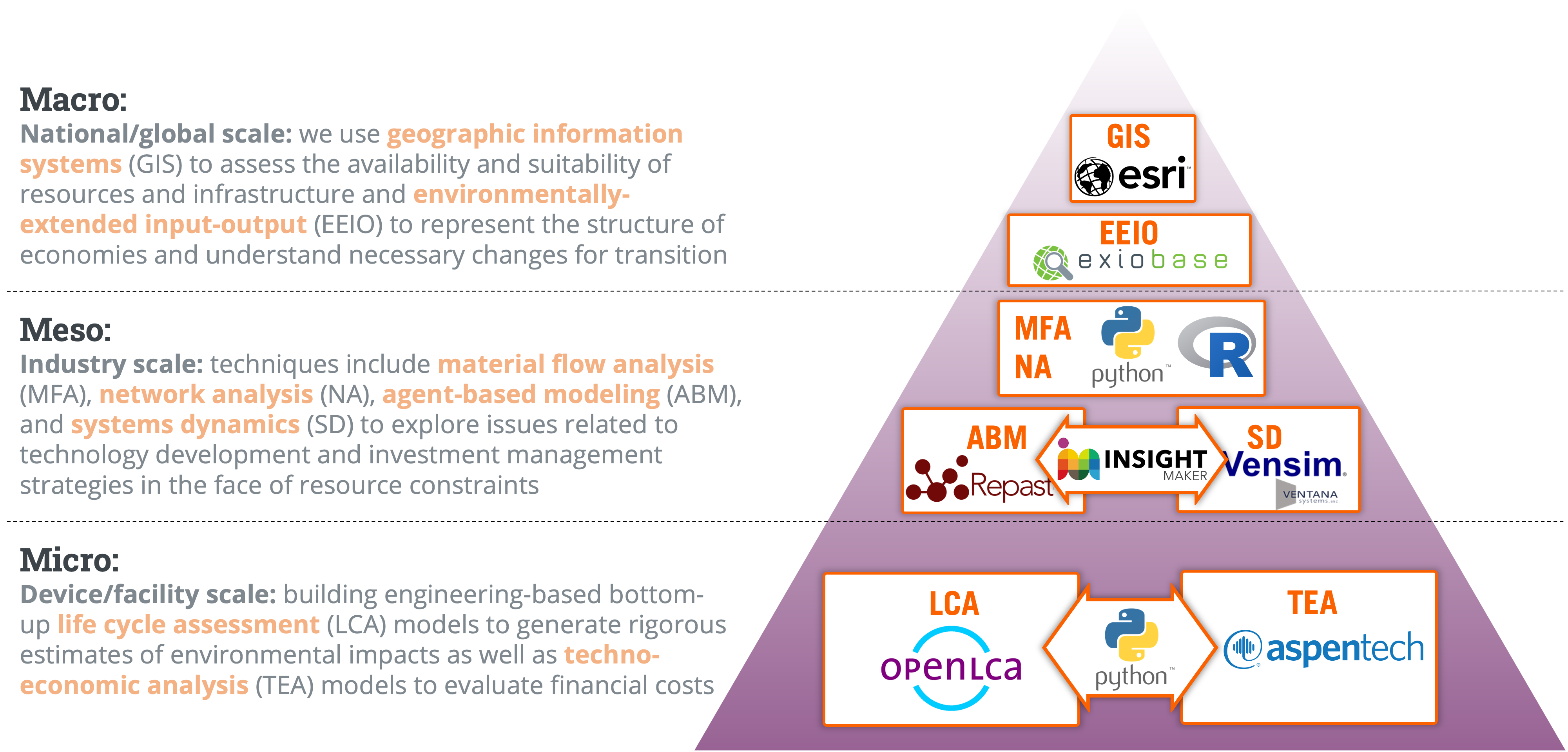What we do
The Clemson Energy-Economy-Environment (E3) Systems Analysis Group sits within the Department of Environmental Engineering & Earth Sciences (EEES). The group’s research focuses on building decision-support tools to reduce the environmental impacts of technology systems and to understand the structural transformation necessary to navigate a peaceful transition to a prosperous and sustainable future. Specifically, we model energy and material resource requirements at three distinct levels: micro, the device/facility level, using engineering-based, bottom-up life cycle assessment and techno-economic modeling tools; meso, the industry/local level, using multi-layer, network-analytic techniques; and macro, the regional/national/global scale, using geographic information systems (GIS) and environmentally-extended input-output models.

Micro:
At the device/facility level, our approach includes building engineering-based bottom-up life cycle assessment (LCA) models to generate rigorous estimates of environmental impacts from extraction and conversion technologies as well as techno-economic analysis (TEA) models to evaluate financial costs. We are also developing integrated LCA and TEA tools to simultaneously improve the energetic, environmental, and economic performance of technology systems particularly for emerging technologies at low technology readiness levels. Our methods are applied primarily to energy systems, in an effort to understand and reduce the environmental impacts of conventional thermoelectric generation and substitutes for conventional technologies (e.g., wind, photovoltaics). We are also currently developing optimization capabilities for combinations of electricity generation and storage technologies.
Meso:
At the industry scale, we use a variety of techniques including material flow analysis, network analysis, agent-based modeling, and systems dynamics to explore issues related to technology development and investment management strategies in the face of resource constraints; identifying synergistic activities for reducing resource use and waste in urban settings; or improving the resilience of low income communities to mitigate and adapt to both natural and man-made disaster events.
Macro:
At the national/global, we use geographic information systems (GIS) to assess the availability and suitability of resources in relation to existing demand and infrastructure and environmentally-extended input-output models to represent the physical structure of our economies and understand what changes might be required to transition for the future.